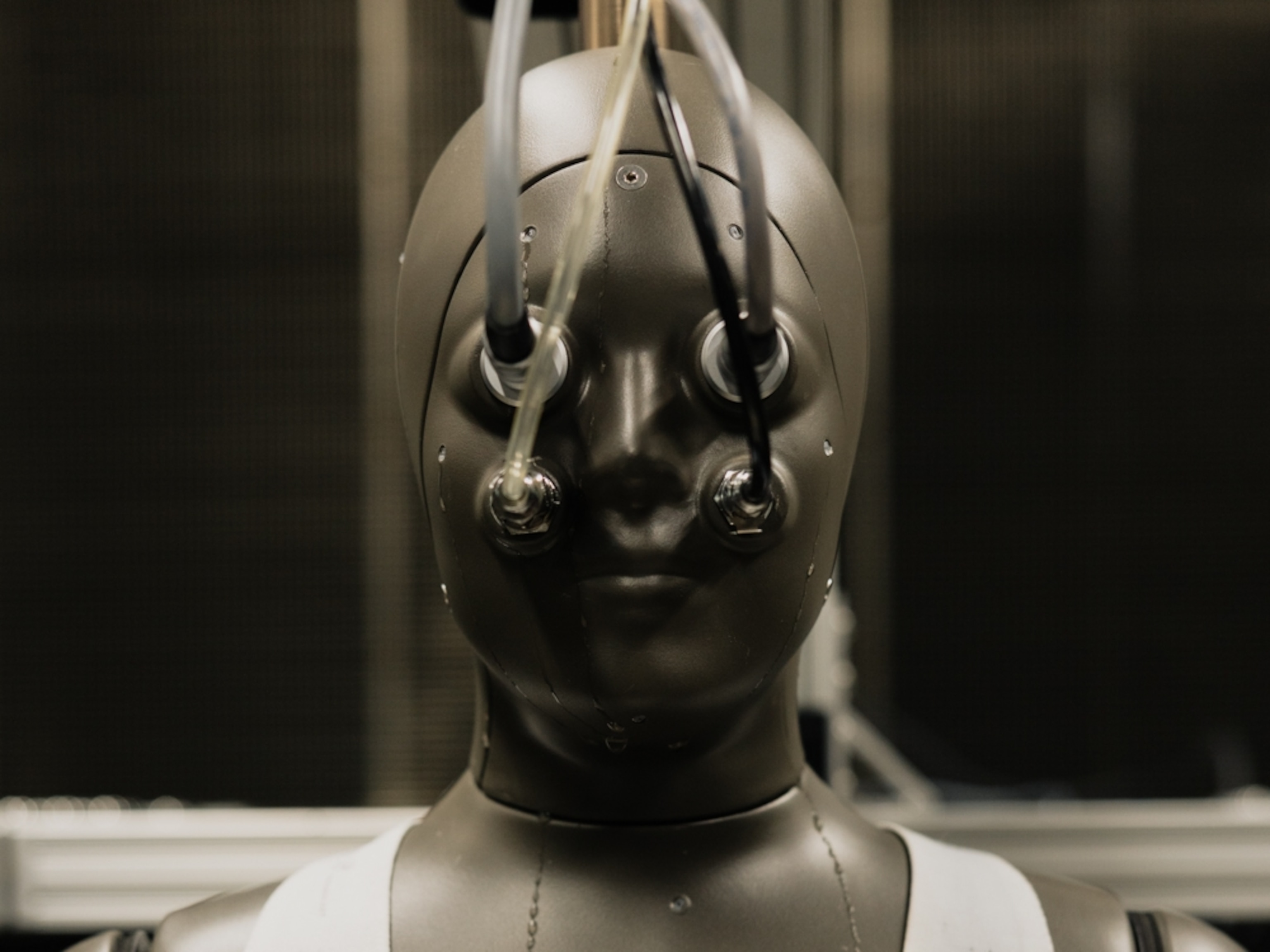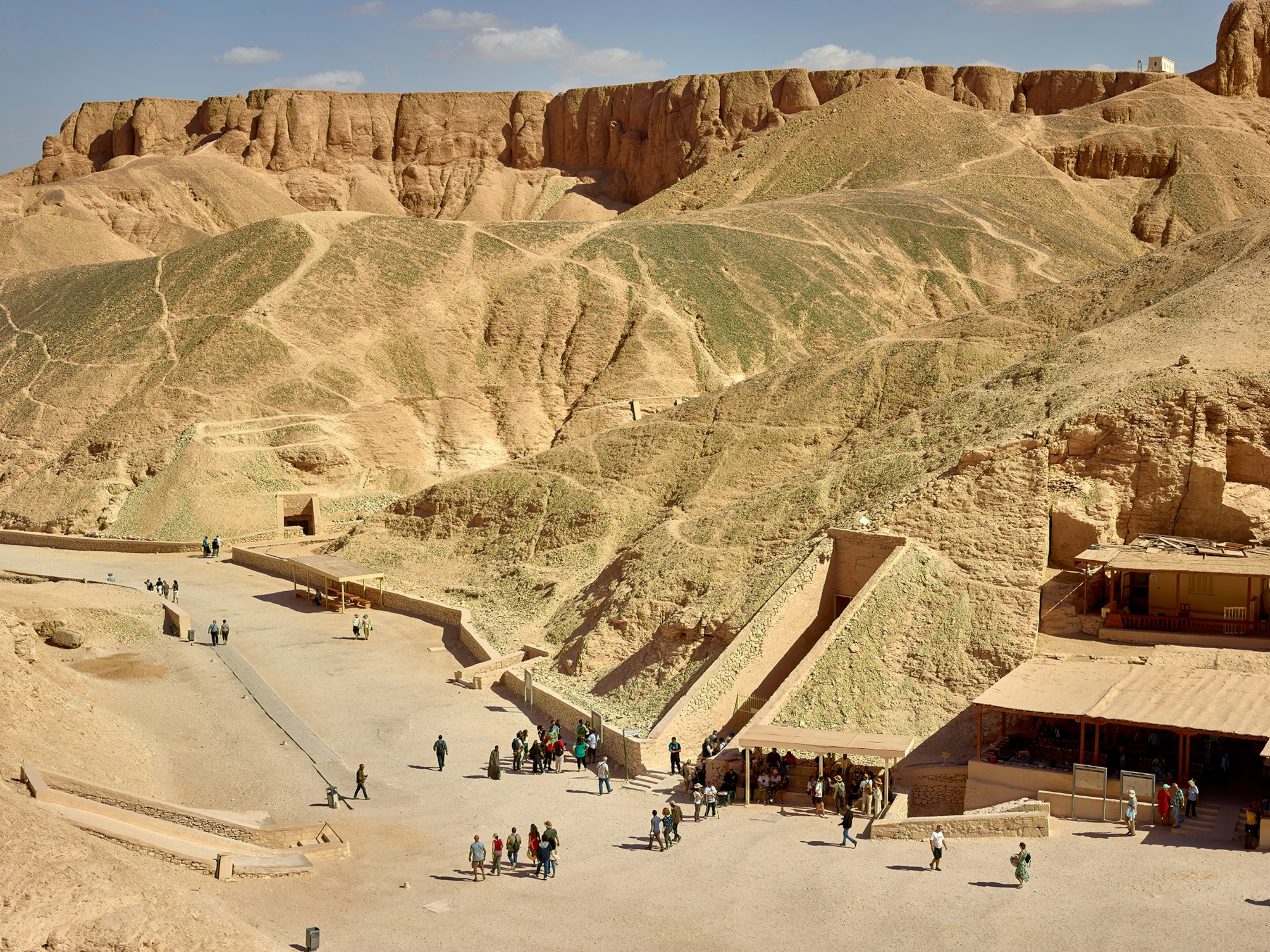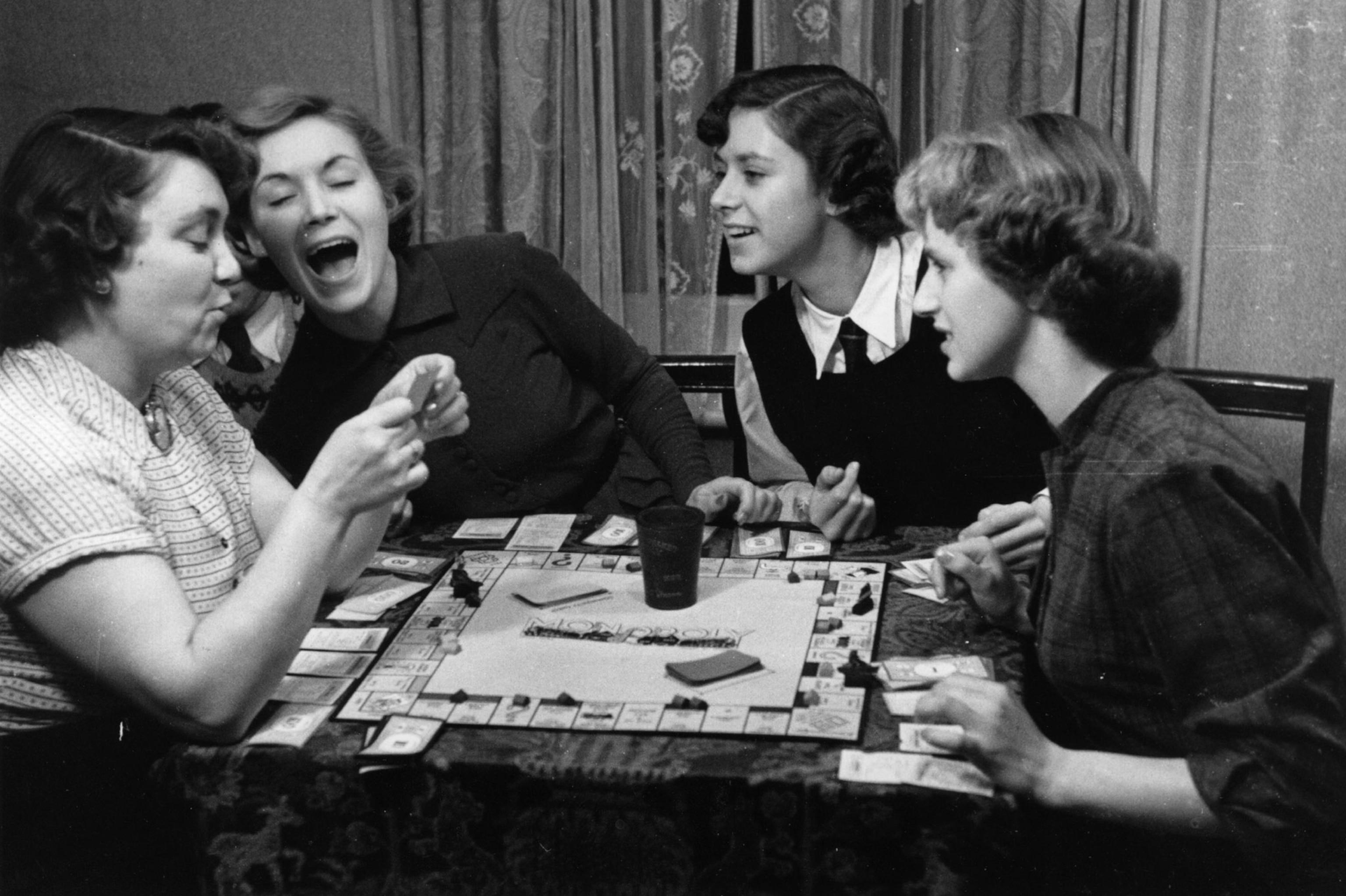
Fun and Games Led to Some of the World's Greatest Inventions
Delight and play are important drivers of historical change.
Play is a frivolous pastime only to be indulged once the real work of the world is done. Or so we tend to think. But what if play is actually a key driver of progress? In Wonderland: How Play Made the Modern World, Steven Johnson argues that many of our most important innovations—from probability theory to artificial intelligence—have their origins in human beings just trying to have some fun.
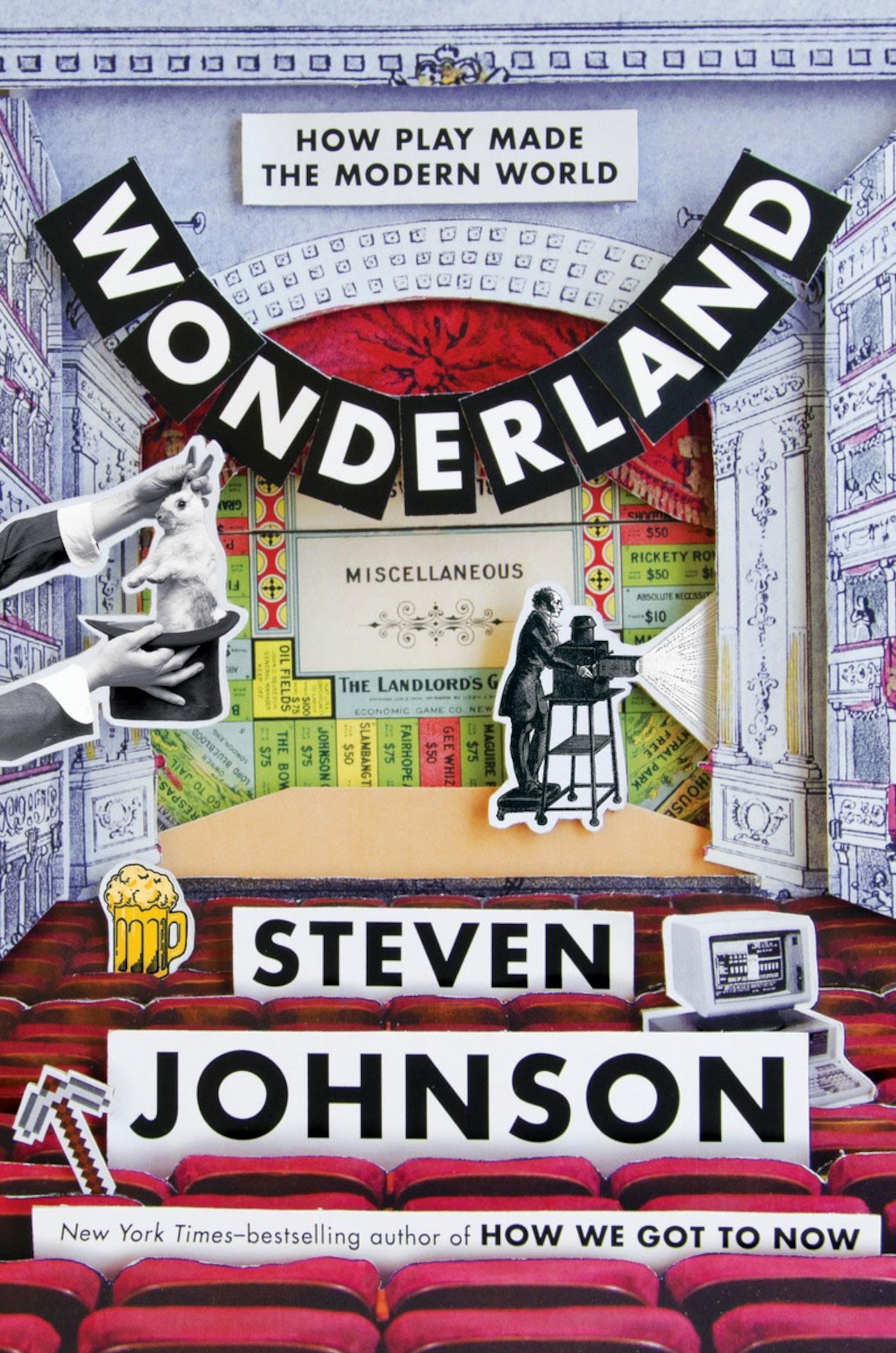
When National Geographic caught up with Johnson by phone in Malibu, California, during a break in his book tour, he explained why an automaton of a dancing girl inspired Charles Babbage to design the first programmable computers, how movie star Hedy Lamarr helped create today’s wireless technology, and how Monopoly was invented by a 19th-century feminist named Liz Magie, who believed playing a game could teach children the evils of capitalism.
You say, “Delight is a word that is rarely invoked as a driver of historical change.” Explain how play actually inspired many of the world’s most important inventions and ideas.
We tend to think about delight, play, and recreational leisure as the spoils of progress. In fact, it goes in the other direction. Many transformative ideas begin with this sense of delight, wonder, or fun.
One of the key examples is a place in Baghdad at the height of the Islamic golden age—the House of Wisdom, a mix of think tank, translation bureau, and maker lab, as we would say today. There were these brothers [the Banu Musa] who came up with incredible engineering ideas that Western Europe wouldn’t see for another 400 to 500 years.
If you look at what they designed, it’s all toys: robotic elephants or automated flute players, designed to amuse and entertain. Those ideas would eventually lead to transformative things, like industrialization, mechanization, and eventually artificial intelligence. But their first appearance was as play.
A key figure in the history of play was Charles Babbage. Tell us about his seminal encounter with an automated doll—and why it still reverberates with us today.
There was a shop in London called Merlin’s Mechanical Museum, run by this crazy guy John-Joseph Merlin, with all these incredible mechanical contraptions. Merlin also had an upstairs attic where he kept special things. There he had an automated dancer who was very elegant and had these humanlike movements. In 1801, an eight-year-old boy is brought to Merlin’s Museum by his mother. Merlin senses something interesting in this kid, so he invited him and his mom into the upstairs attic and showed the boy the automated dancing lady. The boy was completely taken in and later writes in his memoirs how she had an alluring appeal for him.
That little boy was Charles Babbage, who many years later continues his obsession with automation, like the new industrial machines proliferating across northern England, and writes a seminal book about them that influences Karl Marx. Eventually, Babbage starts thinking about how you can take that kind of machinery and use it for computation and calculation. He designs two machines that are rightly considered the first programmable computers.
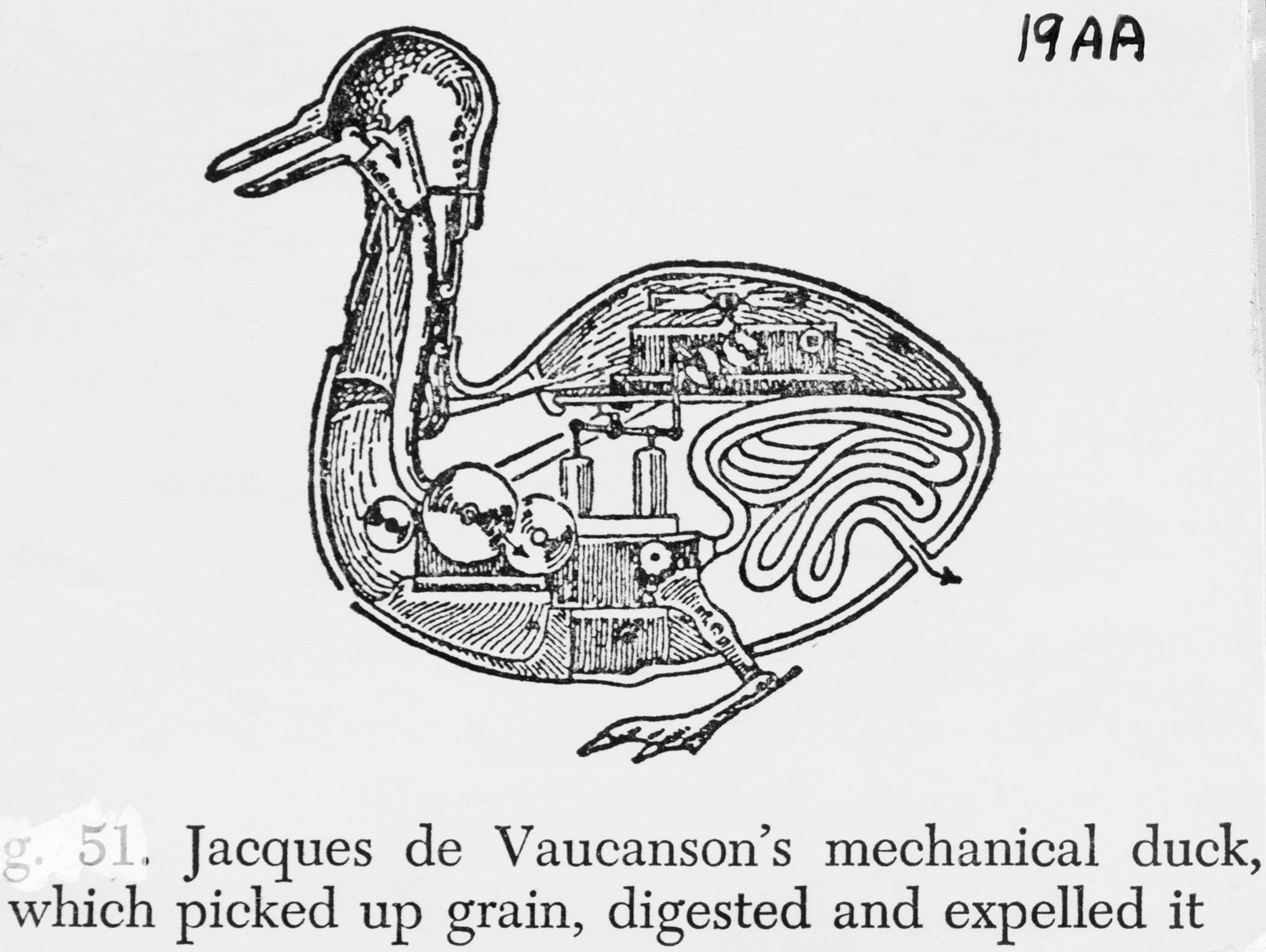
The 18th century was a golden age for automatons. Tell us about Vaucanson’s duck—and some of the other amazing inventions from that era.
It is an extraordinary period! The most advanced engineering in the world was devoted to these automata in the 18th century. Almost without exception, they were objects of amusement and illusion. It was not functional in any way. It was just play.
Jacques de Vaucanson designed a number of things, the most notorious of which was an almost anatomically correct duck that could walk, quack, and waddle like a duck. You could also feed it pellets of food and it would simulate processing that food and defecate, to the amusement of the Parisian elites. The Defecating Duck was his name.
But the most important thing Vaucanson did was to take the idea of music boxes—designed by those Baghdad brothers many years before—to create programmable music, using a rotating cylinder with little pins in it that corresponded to the song you wanted to play. He then began to think about using that system to program a machine to weave patterns into cloth.
That later influenced Joseph-Marie Jacquard, who came up with the idea of using punch cards encoding instructions for a loom into paper. This became the Jacquard loom, which was revolutionary … in terms of textile design and ended up influencing Babbage and the history of computing as well. What’s so fascinating is that the whole idea of programmable machines comes from music boxes.
You write, “Music has a longer history of technological innovation than any other form of art.” Why is that? With some examples, please.
Music is this great mystery. We know it’s an ancient part of human ingenuity. There are bone flutes at least 45,000 years old. In a very early stage of our advancement as a species, we are already using our technical skills to create musical instruments. There’s no functional reason. But people loved them and made them. The Romans designed water-powered organs. Later, this became the clavichord, then the harpsicord, then the pianoforte, which becomes the piano.
But it’s not until the middle of the 19th century that people start to say, “Wait a second, these keyboards work well for music, what if we used them to create letters rather than notes?” That’s where the idea for the typewriter comes from, and later the computer keyboard. In fact, the very first typewriter was called “the writing harpsicord.” When you talk about the keys on your keyboard there’s an echo of the musical sense of the word key.
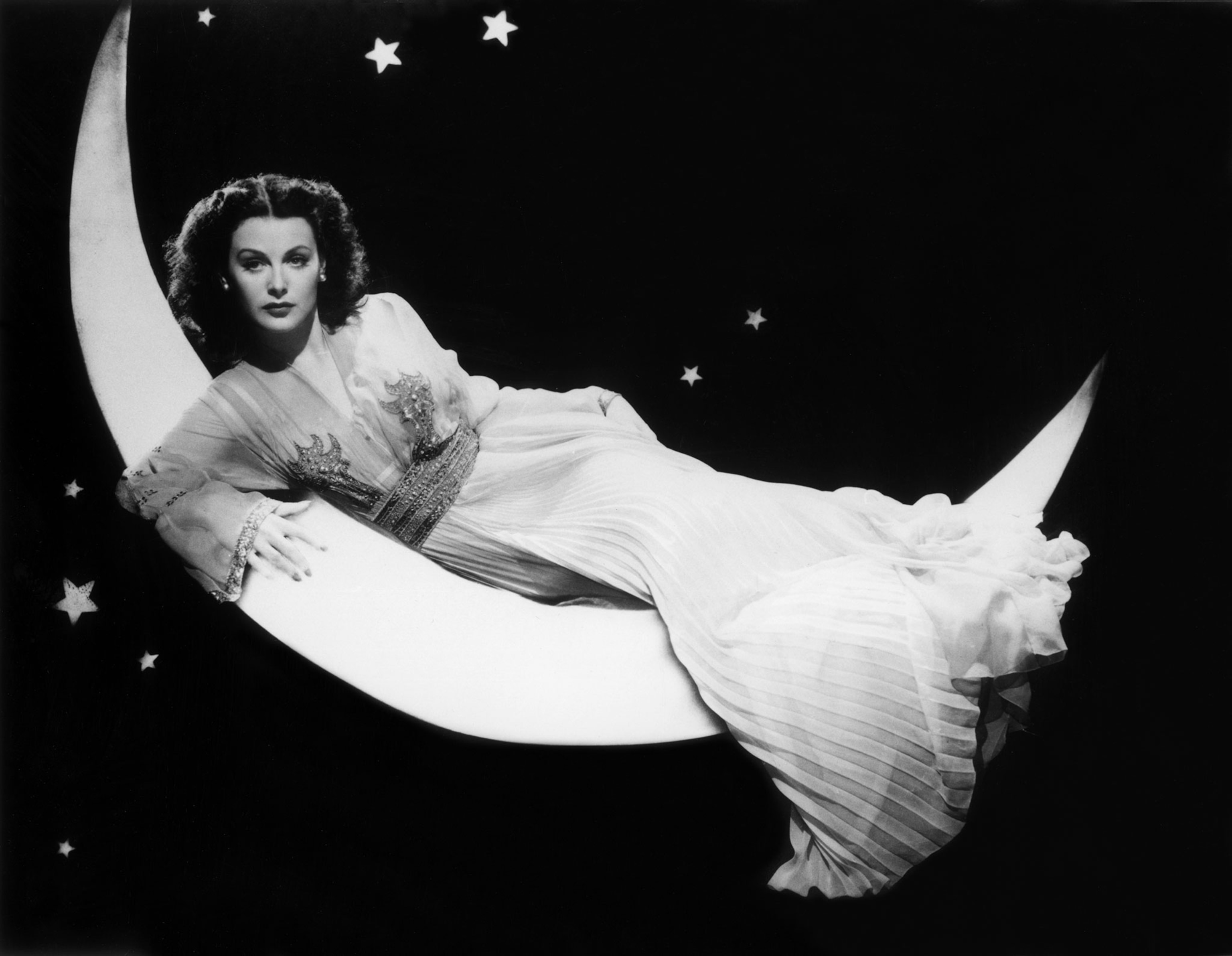
Hedy Lamarr is best known as a movie actress. But she was also quite a geek, wasn’t she?
[Laughs] She’s an incredible figure! She had come over from Austria, where she had been married to this vaguely Nazi arms dealer and had learned quite a bit about the military. She then became a movie star in the U.S., living in Hollywood. As the war was starting, she was very much on the American side and wanted to do something to help the military. She was an armchair inventor who would go off and be this glamourous movie star during the day, then come back home and read Scientific American.
She started working with this guy George Antheil, who was known as the bad boy of classical music. They started thinking about a mechanism, an unhackable transmission system, for controlling a torpedo remotely, so you could send a signal to it without the risk of it being intercepted. They hit on an idea borrowed from the player piano, which is another way in which music changed technology. The player piano has a roll of paper, or pack of punch cards, with holes corresponding to which notes are being played by the 88 keys on the keyboard.
Their idea was that the signal you were sending to the torpedo would hop around at various points in the acoustic spectrum, divided up into 88 different slots. The receiver on the other end knew where the jumps were going to be, because it was following the same code, but someone listening wouldn’t hear it as a signal at all, just brief bursts on one part of the spectrum. The military ignored it at the time but the fundamental idea behind it is used in almost all the important wireless technologies of today.
Charles Darrow has been immortalized as the inventor of the board game Monopoly. But it was actually someone else, wasn’t it? Tell us about Lizzie Magie—and her very different conception of what could be learned from play.
We think of Monopoly as the ultimate celebration of ruthless capitalistic behavior. You want to build a real estate monopoly and kill off all your competitors. The origin story written on every copy of Monopoly was that this down-on-his-luck guy, Charles Darrow, invented the game during the Depression, sold it to Parker Brothers, and made a fortune.
In fact, that story is a complete lie! The game was actually invented 35 years earlier by a fascinating woman named Lizzie Magie, who was a left wing progressive, what we would now call a feminist. She did stand-up comedy and was a follower of this late 19th-century progressive named Henry George. A lot of people at the time thought George-ist economic policy, which was quite left wing, was what the country needed.
But only Lizzie Magie thought his ideas would be best advanced by a board game, so she invented a game called “The Landlord’s Game,” designed to teach kids about the evils of capitalism. The game is clearly Monopoly. You go around, buy property, there’s a jail, there are utilities. But in Magie’s version, you could play it two ways. You could play it traditionally, where you would get all the money and property, or you could play it where the goal of the game is to share the wealth as equitably as possible.
For some reason, that [second] version didn’t survive. [Laughs] But her game developed this underground following in progressive circles. Upton Sinclair played it and people would have their own hand-drawn boards and circulate it among their friends. Eventually, it made its way to Charles Darrow, who got a guy to design the official board and then sold it to Parker Brothers, never acknowledging Lizzie Magie’s original conception of it.

Games of chance, whether cards or dice, are as old as mankind. But they also played a key role in many modern innovations, didn’t they?
There’s a crazy character named Girolamo Cardano, an Italian from the 16th century, who was a full-time gambler and part-time mathematician. He lived this rogue’s life—he knifed a guy in Venice—and lived many years off his gambling proceeds. At the end of his life, he figured out how you could do the math to explain how likely it was that a given event would happen with dice—how much more likely it is that you will roll a 12 two times in a row, verses rolling a 7 two times in a row. Cardano figured out the fundamental principles, which then got refined over the next 50 to 60 years and became the basis of what we call probability theory, which is one of the engines of the modern world. You need probability theory for the insurance business, clinical drug trials, or airplane design. And it all stems from dice games!
You write, “You will find the future wherever people are having the most fun.” So what’s coming down the pike, Steve?
We saw it this summer with Pokémon Go, this international obsession that was completely frivolous and pointless. You’re running around capturing imaginary monsters on your smart phone in the real world. What that game was doing was overlaying a virtual experience—information—over real-world environments. That’s what we call augmented reality: the idea that we are going to be walking around the world in actual physical space but have extra information overlaid in that world, telling us more serious things. Not, hey, there’s an imaginary monster over there, but, hey, your friend is around the corner or this is the best way to walk across the street. We’ll look back in ten years as those things become more prevalent in everyday experiences and say, hey, this all started with a game.
This interview was edited for length and clarity.
Simon Worrall curates Book Talk. Follow him on Twitter or at simonworrallauthor.com.




